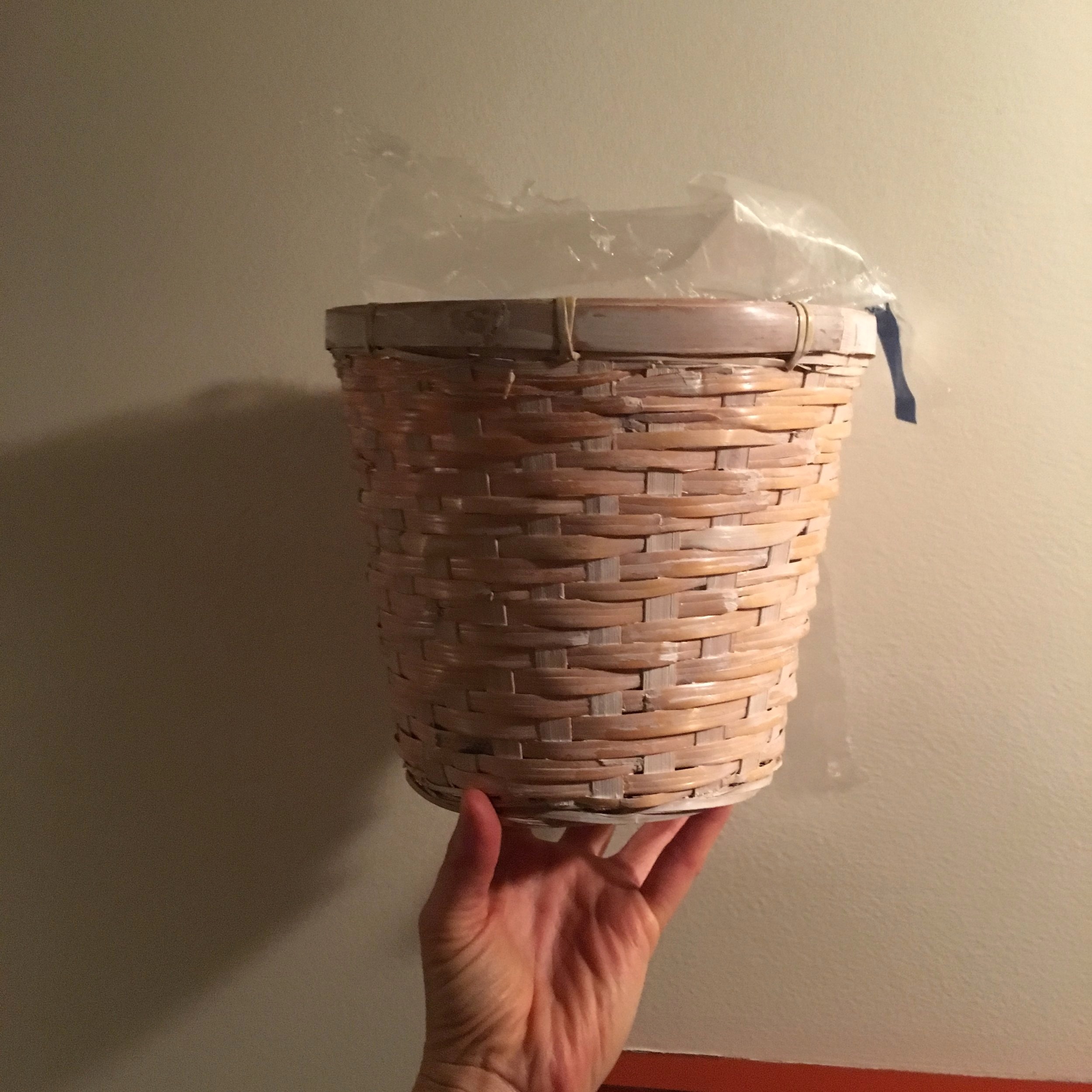Food Packaging: 4 Ways to Reduce Waste in the Kitchen
At the start of the new year, it’s a perfect time to pause and take inventory. Acknowledge the ways in which you are crushing it in life, as well as examine the ways in which you are just gently squishing it…think weak hand holding a stress ball. From this quiet, retrospective place can you set bold goals for the year ahead.
Aside from my perpetual goal to “improve my Spanish and regularly meditate” (ambitions that have been on the list for years now…hmmm…), I had to think, what goal resonates with me this year? What is something that internally motivates me and I can actually put some mettle behind? The answer came easily when I looked in my trash can:
Strive for zero-waste in the kitchen.
When I examine our household “waste stream”, most of the culprits that are destined for the landfill are in the form of food packaging.
Do a quick audit for your own household waste. Yes, go to your trash can and dig around a little bit. Gross, yes, but remember, only you are to blame for just how gross your trash is.
Our itty, bitty trash bin.
Side note - Diligent composting of food scraps means that I can safely rummage through my trash without fear of encountering anything too disgusting. Add the fact that we don’t eat meat or dairy at home, and it’s pretty tame in that little, ol’ rubbish bin.
Our bin is the size of small planter pot. Using a strategically small bin reprograms the brain to what feels like an “appropriate” amount of trash. All of the sudden it becomes unreasonable to add one of those Barbara’s Cheese Puff bags and take up the whole bin (more on this later). In the photo, we are repurposing a plastic ice bag as the garbage bag. When we don’t have a plastic bag to repurpose, we use the compostable BioBag’s so we an send landfill-bound waste down the chute in our building.
When you add on the holiday hustle and the irregular grocery runs that accompany it, it is really easy for food packaging to creep back in and suddenly be a “thing” again. I proclaimed to my boyfriend after looking at our trash bin that we were officially re-instating the goal for zero-food-packaging-waste in the kitchen (thankfully, he hails from the mountains and adores Mother Earth and so is naturally on board).
There are the tried and true tips: buy from the bulk bins, use glass jars to store your food, and cook more at home. But, when I look at my own trash, I have some specific culprits. Below I’ve outline 4 of my personal weak spots and how I plan to fix them:
These bags instantly make our trash full. Not acceptable!
1. Where I get stuck: Snacks
We are not a huge snack household, but I definitely like to have something on-hand. Namely, Barbara’s Cheese Puffs. If you know, you know. They are painfully delicious. And today, I looked at a bag in the grocery store, took a picture of it, and WALKED AWAY. This is the #1 culprit to dashing my zero-waste dreams. So I resisted. Instead, I filled a brown paper bag with salty, crunchy plantain chips from the bulk bin. This will satisfy the snacking desire without the plastic bag. And in the meantime, I’m going to relentlessly submit anonymous comments to the makers of Barbara’s Cheese Puffs to request sustainable packaging.
Also on the snack list is finding a local restaurant where I can buy tortillas from using my own bag.
2. Where I get stuck: Recycling too many glass bottles (vinegars, olive oil, sauces).
It’s time to get to cut back on my consumption of vinegars, oils and sauces, even if they come in recyclable containers. The aim is to just keep stocked one primary vinegar at a time, master recipes using it, and move on to another vinegar for the next phase. Hot sauce, well it’s going to take a while to get through our now-hearty stash, but I’ll try my hardest (insert sweating emoji).
3. Where I get stuck: Caught at a store without bulk, when we “need” something like, tahini.
I think the biggest improvement here will come from creating a shopping routine. The challenge of a super flexible work schedule is that I go to a variety of stores, depending on where I am in the Bay Area and for different purposes. I need to create a routine and simplify this so that I don’t cave and buy a package of rice when I’m at a store that doesn’t sell it in bulk. By creating a routine of where/when to buy certain goods, this will remove the inevitable run-around and hopefully lead to overall feelings of sanity. We eat a lot of soba noodles, so finding that in bulk will be a top priority.
4. Where I get stuck: Recycling too many glass bottles (WINE).
Wine deserves its own category. When it comes down to it, this is what mostly fills the recycling bin. After a quick search, I found a local purveyor of wine who refills bottles: Tank 18. They have monthly BYOB refill events, and you can bring any empty wine of bottle and they will fill and re-cork it for you! Amazing! It’s on my calendar for later this month…in the meantime, dry January???
The thing about recycling
Yes, recycling is better than not recycling. But, recycling takes up a lot of energy: water and transportation costs, mainly. In case you didn’t hear, back in Jan. of 2018, China stopped importing plastic recycling (hmm, is it any wonder why? We were sending barges upon barges of dirty recyclables, much of which were contaminated so that they couldn’t even be recycled). Before this, China previously took about 50% of the world’s recycling. Which means recycling will become more expensive, and our solutions will have to be more localized. Like, deal with your own trash, people.
But, this is progress. China refusing our barges of recycling is progress. Feeling the constraints of our ecosystem and taking action (even if it is reactive) is progress.
More good news:
The European Union banned an array of single-use plastics by 2020.
Taiwan also banned plastic bags, plastic straws and plastic utensils by 2030 (too far away of a deadline, but at least it’s out there)
I recently had a (somewhat heated) debate with a young, educated (white male) from New York City who was humble-bragging that his friend was pioneering a new “superfood “ mushroom dust product thingy. I said offhand that I hoped his friend’s little packets would be made of compostable materials. This New Yorker was pretty adamant that this was a pointless pursuit and would have no impact on the environment. Obviously, I disagreed and said debate ensued.
It is this PRECISE, shrug-it-off, export-it-to-China, I-can’t-make-a-difference mindset that got us into this huge mess to begin with. Even more surprising, this New Yorker is a surfer, whose partner teaches mediation for a living…seemingly intentional people who like the outdoors, right?
So why the indifference? What is the disconnect to feeling like your actions don’t collectively have the power to make a difference?
I am not leading a 100% zero-waste life, but I am trying. And I hope that I am setting an example by sharing tips to continue to decrease my own food packaging consumption. Let’s be strive to be active participants in this equation! In the words of Lauren Singer of Package Free Shop,
GIVE A SHIT.
Resources
Taiwan Plastic Ban (Global Citizen)
E.U. plastic ban (BBC World)
The Story of Stuff Video (21 min video)
http://www.grabco.co.uk/gardeners-compost-guide/
https://zerowastechef.com/
https://packagefreeshop.com
https://ecologfycenter.org/plastics/
http://www.tank18.com/byobdetails





